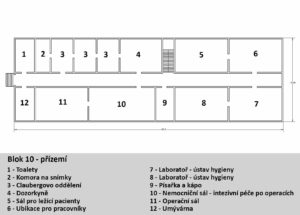Forty-four-year-old doctor Carl Clauberg begins working in Auschwitz II – Birkenau. This respected gynaecologist joins the Nazi programme of sterilisation, which is personally supported by Himmler. He has calculated that amongst the European Jewish population, there are two to three million healthy, strong young men and women, who could be spared by being selected, sterilised, and then forced to work for the Reich without the risk of their further procreation.
Doctor Clauberg does research on women between the ages of twenty and forty that have already given birth. His method lies in applying sticky substances through the uterus into the fallopian tubes in an attempt to glue them shut. The injections are applied in three stages throughout several months. He x-rays the women before and after the procedure. He is cold towards them, and is sometimes quite cruel. The injections are applied without anaesthetics, and the women suffer great pain.
Although the small and stocky Clauberg is ranked as a general in the reserves, he is employed as a civilian. In addition, he has his own private clinic not far from the camp.
Simultaneously with Clauberg’s actions, Nazi physician Horst Schumann begins experimenting with the sterilisation of men and women in hospital Block 30 of the women’s camp in Auschwitz II – Birkenau. He, however, decides to use x-rays for this purpose.
He personally chooses youths and girls 18 to 20 years of age. They have to strip bare, and then stand in between two x-rays that radiate their genitalia for several minutes. Several of them die during the experiments after great suffering, and most of the survivors are sent to the gas chambers after the suffering ends, as they have radiation burns and are not able to work.
In order to discern the effects of the radiation on youths, Schumann tests their sperm. He uses a cane covered with a rubber hose, that is stuck into the anus of the victim, brutally massages the prostate and forces ejaculation. He sends the ejaculate to a laboratory in Breslau, today known as Wrocław.
Also, he has the testicles of selected youth removed and the ovaries of selected girls operated out. Sometimes, they are operated twice; in the first operation, one testicle or ovary is removed, and then, after some time, the victim loses possession of their other testicle or ovary. The obtained specimens are again sent to the laboratory in Breslau
Ninety youths from a group of 180 young prisoners whose genitals were radiated in the previous days are castrated with only minimal anaesthetics, with only an injection into the spine. Those operated, paralysed by the injections, remain conscious and witness their mutilation. Their desperate cries resound in the surroundings of the operation room. Both, or just one, testicles are removed. The operations have an audience of SS officers, who are thoroughly entertained.
The castrations last all day into the night, and the surgeons are the prison surgeon Dering and the Nazi physician Entress. Due to the speed of the surgical interventions, some operations are shoddily done.
In the next days, the ovaries of the girls are removed, and again with the same speed and under the same amount of anaesthetics.
Unfortunately, some of the operated inmates must undergo another operation in the next few December days, in which they lose their other testicle or other ovary.
Several people die already during the experiments, and the entire episode ends for this group of youths and girls by their selection, and most of them are sent to the gas chambers. Some are sent back to work.
The experiments in the infamous women’s Block 10 in Auschwitz I begin. A well-equipped research laboratory is created there. Dr. Carl Clauberg is the first to bring his patients here, where he continues in his sterilisation experiments. He has a top-notch x-ray available, as well as four special rooms, one of which is a dark room for the development of the x-ray images. Also, there is a bedroom for up to 400 patients on the first floor.
Gradually, three wards are established in the enclosed Block 10. One belongs to Dr. Clauberg, one to Dr. Schuman and to head physician Wirths, and the third is the laboratory of the Hygienic Institute.
The windows of Block 10 that open into the courtyard between Blocks 10 and 11 are boarded up so that the interned prisoners cannot witness the shooting of those sentenced to death
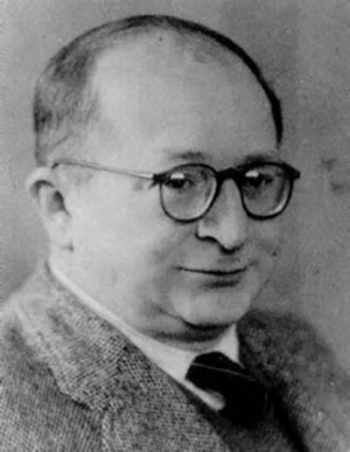
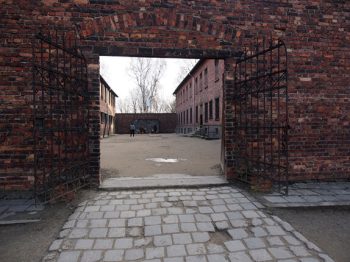
Twenty-eight-year-old German physician and bacteriologist, SS-Obersturmführer Bruno Maria Weber, becomes the head of the Hygienic Institute in Auschwitz. The Hygienic Institute has two laboratories and a room for the collection of blood located in the experimental Block 10 in Auschwitz I, as well as a detached workplace in nearby Rajsko.
Of the Block 10 workplaces, the Hygienic Institute is a place where many patients are saved, since the experiments done on them are not that dangerous. The workers of the institute, Nazi and camp physicians, contribute to the fight against typhus and other epidemics. Their research is based on special examinations and on the analyses of blood, urine, and faeces, but also new medicine based on sulfonamides is tested on the prisoners.
The workplace of the Hygienic Institute also has two very dark sides to it. The first is the large amounts of blood drawn from prisoners, which greatly weakens them and sometimes causes their deaths. There is even talk about patients bleeding to death when blood is drawn from their carotid arteries.
The second dark side is the cultivation of bacteria. At first, they use beef for this purpose, but when people start to steal it, it is decided to cultivate the bacteria in human meat. They get this by cutting off pieces from the buttocks and thighs of the executed from the adjacent courtyard, and later the human meat is transported in from Crematorium III. Testimony of this is captured by the Sonderkommando prisoner Olére in his painting.
According to eye-witness reports, Weber is polite to the Jewish doctors, and he protects them from the others. Maybe this is one of the reasons why he is acquitted at trial after the war is over.
Thirty-two-year-old doctor Hans Wilhelm Münch starts working at the Hygienic Institute. He works in bacteriological research.
According to witnesses, he is the only one who does not violate the Hippocratic Oath. He refuses to take part in the selections taking place on the ramp, and many of his experiments are a mere farce actually protecting the female prisoners who would have otherwise already been deemed as useless experiment subjects designated for liquidation. According to the testimony of camp physician Louis Micheels, Münch gave him a pistol for protection before leaving Auschwitz during its evacuation.
Dr. Clauberg announces the results of the sterilisation of Jews by injections through the uterus into the fallopian tubes, which should glue them shut. According to his claims, several hundred to several thousand people could be sterilised every day. The sterilisation could take place with the help of one injection during a general gynaecological examination. The question is, how truthful are the claimed results of his research, and how much have they been adapted to benefit his method. According to estimates, he attempts the sterilisations on more than one thousand women in Auschwitz, and some sources cite up to several thousand women.
The surgeon Dering removes the ovaries from ten to twelve Greek girls aged 15 to 19 as a part of the experiments taking place in Block 10 in Auschwitz I. In the summer of 1944, Dering is released, and he leaves the camp as a free man.
The women’s experimental Block 10 in Auschwitz I is moved to Block 1 in the newly built-up area not far from base camp. These barracks are located in the protected zone, about a five-
minute walk from Auschwitz I. Block 1 was previously personally chosen by Dr. Clauberg for the continuation of his experiments on women.
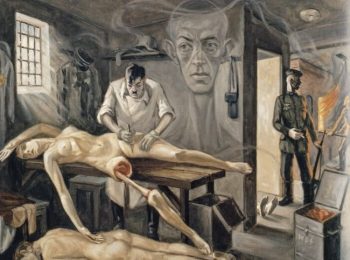
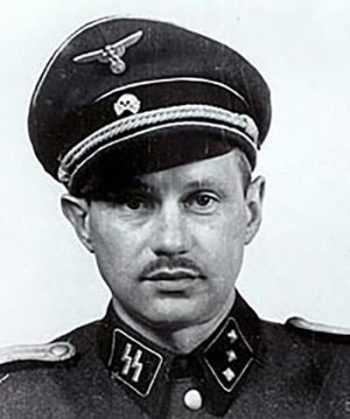
Gallery
- Všechny kategorie
- 3D Model
- Technical draw
















